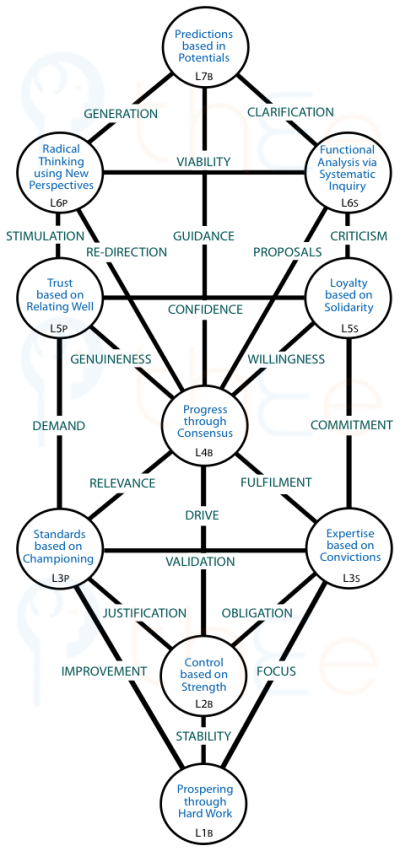Review: The Full Picture
Tree Framework
The complete Tree pattern of cooperating for results is shown.

The Tree is a dynamic structure because of the continuing tension between:
- participant/individual forces aspects; and
- group/social forces aspects
in relation to all choices within it.
Centres Involve Ethical Choices
The Centres (circles) in the Tree are derived from two of the seven approaches to making an ethical choice, which are applicable to joint endeavour.
The lower four Levels are all individualist in nature (), progressively:
■ Sustaining ()
■ Constraining ()
■ Differentiating ()
■ Integrating ()
The upper three Levels are all communalist in nature (), progressively:
■ Sustaining ()
■ Constraining ()
■ Differentiating ()
The Centres are discrete modes of , which were derived from a THEEsubsidiary typology: ().
Channels
The situations and choices in any Centre influence situations and choices within other Centres. The lines in the Tree are Channels for these bi-directional influences, named provisionally as shown. Everything is simultaneously in existence (or potentially available) in any joint endeavour to a greater or lesser degree, either explicitly or implicitly.
![]() The Tree contains three zones.
The Tree contains three zones.
![]() The Tree models synchronous effort.
The Tree models synchronous effort.
-
Go to making diagnoses.
Originally posted: July 2009